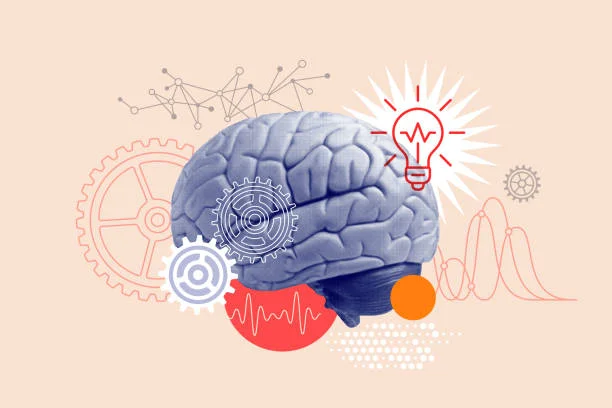In today’s rapidly evolving landscape, technology is reshaping the way mental health services are delivered, accessed, and funded. From AI-powered therapy tools to mobile mental health apps or Mental Health Projects, innovation is creating new possibilities for both providers and patients. However, one of the biggest hurdles for organizations and startups in this space is securing the funding needed to turn these ideas into reality.
In the digital age, understanding how to navigate the grant application process is just as important as having a groundbreaking idea. By combining the right funding opportunities with a strong technological vision, mental health initiatives can gain the support they need to scale and make a lasting impact.
Still curious? Here’s another read we think you’ll love.
The Rise of Tech-Driven Mental Health Solutions
Over the last decade, technology has been playing an increasingly important role in mental health care. Mobile apps are making therapy more accessible, telehealth platforms are connecting patients to licensed professionals from anywhere, and wearable devices are providing real-time data to track mental well-being.
The COVID-19 pandemic further accelerated the adoption of telehealth and digital solutions, proving that remote care can be both practical and scalable. For many patients, especially those in rural or underserved areas, these tools have become lifelines. However, developing these solutions requires significant investment in research, design, compliance, and marketing. Without external funding, many promising ideas never leave the drawing board.
Why Grants Are Critical for Mental Health Innovation
Grants offer an invaluable source of non-dilutive funding, meaning organizations don’t have to give up equity or take on debt to receive financial support. This is especially important for mental health projects, which often prioritize long-term societal impact over short-term profits.
For tech-based mental health projects, grant funding can cover:
- Product development and software engineering;
- Clinical trials and research validation;
- Licensing, compliance, and data security measures;
- Outreach and community engagement;
- Scaling to reach larger user bases.
Grants also bring intangible benefits: validation from a recognized funding body can strengthen credibility, attract strategic partners, and open doors to additional resources. Many investors view grants as a positive sign that a project has been thoroughly evaluated and deemed worthy of support.
Where to Start Your Search for Funding
Finding the right grant requires aligning your project’s mission with a funding body’s goals. Public agencies, private foundations, and corporate social responsibility programs are increasingly seeking projects that address mental health through innovative approaches.
One of the best places to begin your search is to explore available mental health grants through specialized funding databases. These platforms consolidate opportunities from multiple sources, saving valuable time and ensuring you don’t miss critical deadlines.
When evaluating potential grants, consider:
- Eligibility requirements – Do they align with your organization’s status and project scope?
- Focus area – Does the funder prioritize technology-enabled mental health solutions?
- Funding amount – Will it cover your planned milestones or require additional fundraising?
- Application process – What documents, proposals, or partnerships are needed?
Networking can also play a crucial role. Attending mental health conferences, technology expos, and nonprofit funding events can connect you with grant officers and decision-makers directly.
How to Stand Out in a Competitive Application Process
Given the competitive nature of mental health funding, crafting a compelling grant application is essential:
- Highlight your innovation – Show how your approach is different and why it matters now.
- Demonstrate measurable impact – Provide data, testimonials, or research results.
- Address compliance and ethics – Outline privacy safeguards and regulatory compliance.
- Show collaboration – Partnerships with hospitals, advocacy groups, or tech companies strengthen your case.
- Plan for sustainability – Demonstrate how you’ll maintain and grow your project post-grant.
- Tell a story – Funders connect with real-world narratives that illustrate need and impact.
A well-crafted application should weave together facts and human stories, showing both the technical feasibility and the real-life change your solution can create. Many successful applicants also include letters of support from stakeholders, pilot project data, and clear roadmaps for implementation.
Emerging Trends Shaping Mental Health Funding
Grant-making bodies are increasingly focusing on:
- AI-driven early intervention tools;
- Community-led mental health programs;
- Solutions addressing minority and underserved groups;
- Hybrid care models integrating virtual and in-person services.
Cross-sector collaboration is becoming a priority, encouraging partnerships between healthcare providers, tech developers, and community organizations. Projects that incorporate diversity, equity, and inclusion principles are especially appealing to today’s funders.
Another trend is outcome-based funding, where grants are tied to measurable impact metrics. This model encourages projects to collect robust data and continually evaluate effectiveness, which can also help when applying for future funding.
The Future of Mental Health Funding in the Digital Era
Staying proactive is the key to securing future funding. This means monitoring funding announcements, joining relevant networks, and refining your applications based on feedback. Building a pipeline of potential funding sources ensures you’re not relying on a single grant to sustain your work.
As technology continues to advance, we can expect more opportunities for forward-thinking mental health initiatives. Areas like digital therapeutics, peer-support platforms, and predictive analytics for mental health crises are already drawing attention from funders.
Ultimately, securing grants is about more than financial survival—it’s about building a foundation for long-term impact. By blending technological innovation with strategic funding, organizations can help transform mental health care into something more accessible, equitable, and effective for everyone.
If you enjoyed this post, you’ll love what’s featured on Management Works Media.






